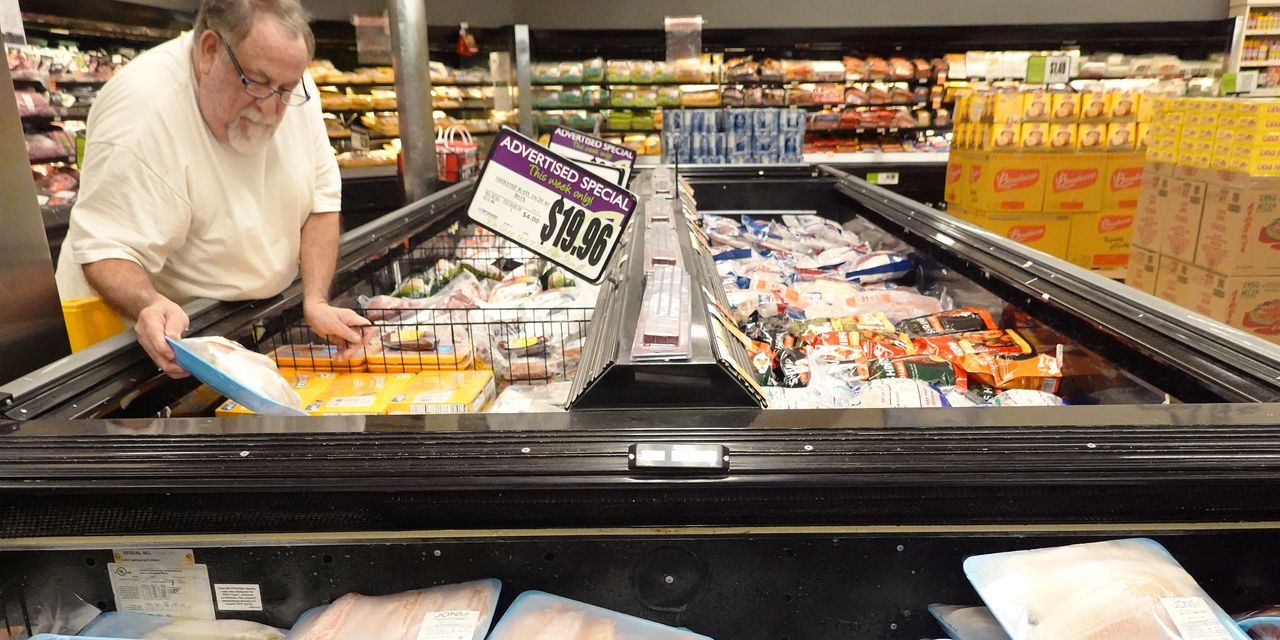The numbers: U.S. consumer prices leaped 0.6% in August — the biggest increase in 14 months — largely because of higher oil prices. Yet inflation more broadly did not appear to show worrying signs.
If energy and food prices are set aside, so-called core inflation rose a smaller 0.3% in August, the consumer price index showed.
That was a tick above Wall Street expectations, however, and cast a negative tone over financial markets. The core rate has increased a slower 0.2% in the prior two months.
The yearly rate of inflation moved up to 3.7% last month from 3.2% in July and a 27-month low of 3% in June.
The annual rate of core inflation, for its part, decelerated to 4.3% from 4.7% and touched the lowest level in 22 months.
Read MarketWatch’s full coverage of the CPI.
The Federal Reserve views the core rate as a better predictor of future inflation trends since energy and food prices often jump up and down.
The August inflation report is unlikely to sway senior Fed officials ahead of their regular meeting next week at which they expected to hold a key U.S. interest rate at current levels. Some economists even think the Fed is done raising rates.
The central bank has jacked up its benchmark rate to a top end of 5.25% from near zero a year and a half ago in an effort to slow the economy and temper inflation.
Fed officials now believe inflation will continue to slow toward their 2% target. They worry they could tip the economy into a recession if they go too far.
Key details: The cost of gasoline surged almost 11% last month and accounted for more than half of the increase in the CPI. Falling energy prices had played a big role in the slowdown in inflation earlier in the year.
The cost of food increased a mild 0.2% last month. Grocery prices soared in 2022, but they are no longer rising rapidly.
The cost of shelter — the biggest expense for most families — increased a modest 0.3% last month. It’s been a big contributor to the worst inflation outbreak since the early 1980s. Rents still rose a sharp 0.5%, however.
Fed officials believe shelter prices will continue to ease and help drive the rate of inflation lower in the months ahead.
Other nuggets in the report:
Airline fares climbed nearly 5% after four straight declines, contributing to the elevate core CPI reading. Prices could rise further if the cost of oil remains high.
The cost of auto insurance, new cars and trucks and home furnishings also rose in August.
Prices for used vehicles dropped again and hotel rates also declined for the third month in a row.
Big picture: Inflation is still more than double the Fed’s 2% target based on its preferred core measure, but it’s been headed in the right direction.
That’s probably enough to keep the Fed on the sidelines at its policy meeting next week. And the bank might be done raising interest rates if shelter and labor costs continue to moderate.
Any backsliding in those areas, however, could also force the Fed’s hand.
Looking ahead: “This was bad news for Americans who feel inflation most acutely when filling their tanks and writing their rent checks,” said corporate economist Robert Frick of Navy Federal Credit Union. ” And given core inflation rose, it’s clear inflation around current levels may be with us for months.”
The report “does keep alive the risk that the Fed might hike again in the fall,” said economist Ali Jaffery of CIBC Economics in a note to clients. “However, the broader data continue to suggest that the U.S. economy is slowing and, even if the path is a bit bumpy, we expect the Fed will hold.”
Market reaction: The Dow Jones Industrial Average
DJIA,
and S&P 500
SPX,
were set to open lower in Wednesday trades.
The yield on the 10-year Treasury note
TMUBMUSD10Y,
rose to 4.30% because of the elevated core CPI reading.
Read the full article here












Leave a Reply